
The acoustic guitar remains one of the most popular instruments among singer-songwriters, as well as solo instrumentalists. Admittedly, this is probably in part due to it being so portable, but beyond such everyday practicalities, there is an enduring fascination in getting so much from an instrument that, in theory, could seem quite limited.
We have just six strings to work with, but, if anything, this seems to encourage us to push the boundaries – and it’s not uncommon for seasoned players to discover new chords and voicings that have been hiding in plain sight for decades!
If we move beyond the standard tuning, these possibilities multiply, as suddenly we’re able to access voicings that are impossible – or even painful – in regular tuning. We can use the open-tuned strings as a ‘drone’ while shifting one note around, or see what happens when we try regular chord shapes in the non-standard tunings.
Changing things up like this can also shift writers’ block or give the solo acoustic guitar a more wide-ranging yet self-contained sound.
In this feature, we’re looking at some of the more popular tunings, but rather than simply showing a few major and minor voicings that are widely available elsewhere, we’ll be exploring some of the more unusual, following in the footsteps of players such as Joni Mitchell, Nick Drake, Jimmy Page, Nick Harper and Gordon Giltrap. Welcome to the tuning rabbit hole!
Tuning #1: Double Drop D
To try this tuning, simply drop both high and low E strings by a tone, giving (low to high): DADGBD. Neil Young is fond of this tuning; check out Cinnamon Girl and Cortez The Killer.
Example 1. Em7
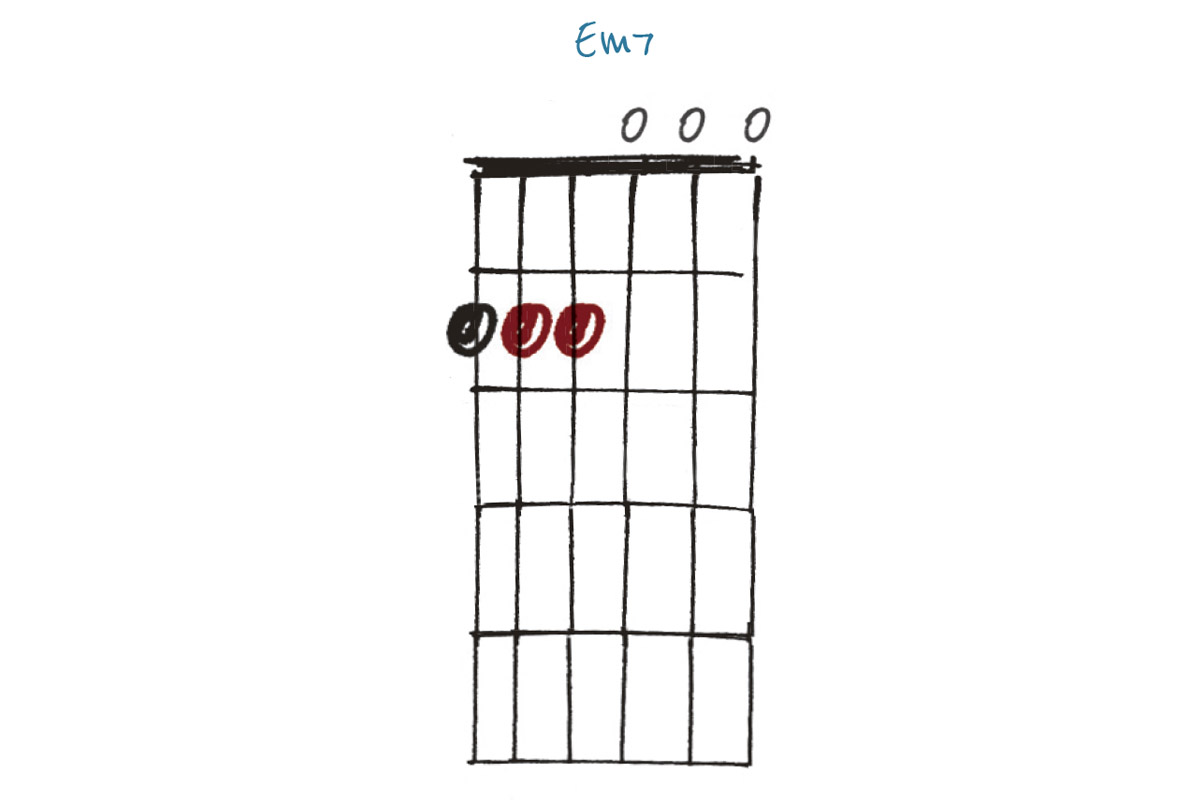
This Em7 makes use of the open first string, giving us the 7th (D) as the top note. We’re fretting the sixth string at the 2nd fret, giving us the root (E) we would have if we left this string in standard tuning. But we will be making use of this soon…
Example 2. Cmaj9
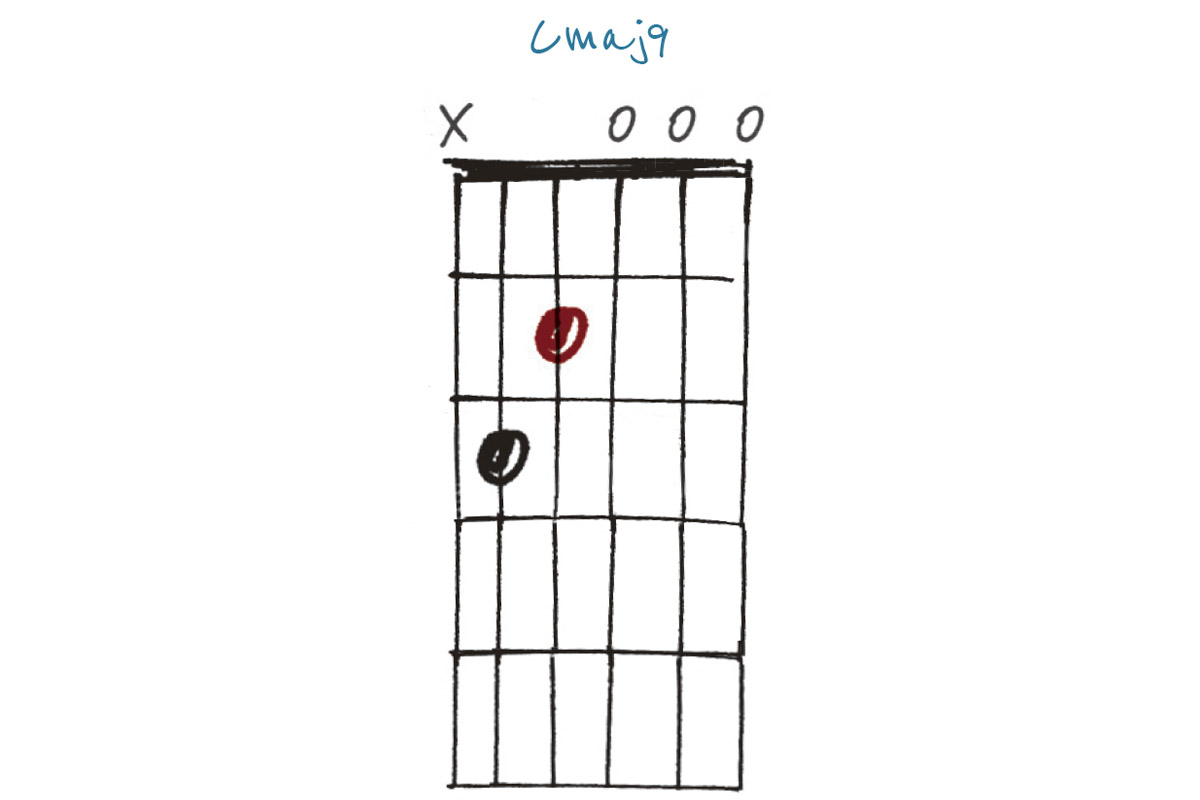
While we’re in open position, this is what happens when we use a Cmaj7 shape. The 9th (D) is provided by the open first string. Play a regular C chord and you’ll get Cadd9.
Example 3. F6
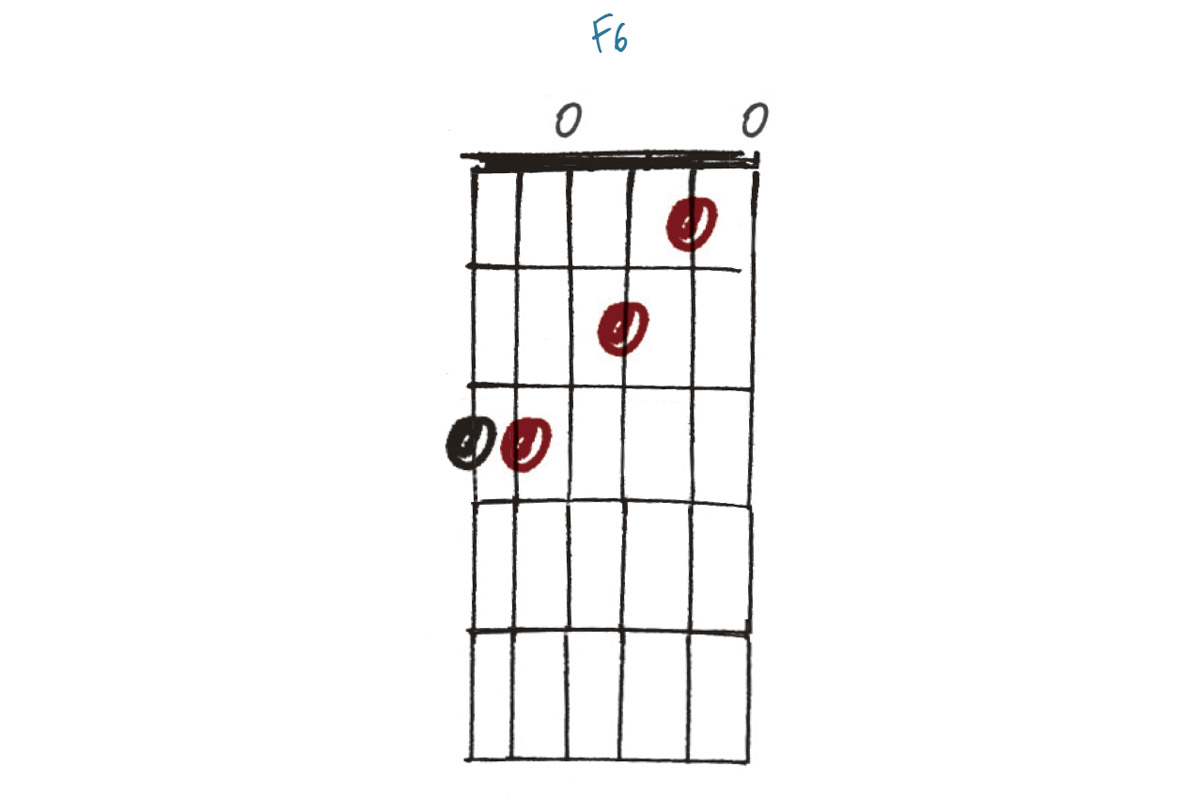
The 6th (D) appears on the open fourth and first strings here, giving this chord an unusual feel, very Nick Harper in style. Like Examples 1 and 2, this chord features open strings, so strictly speaking it isn’t movable. But why not try anyway?
Example 4. Am7(add11)
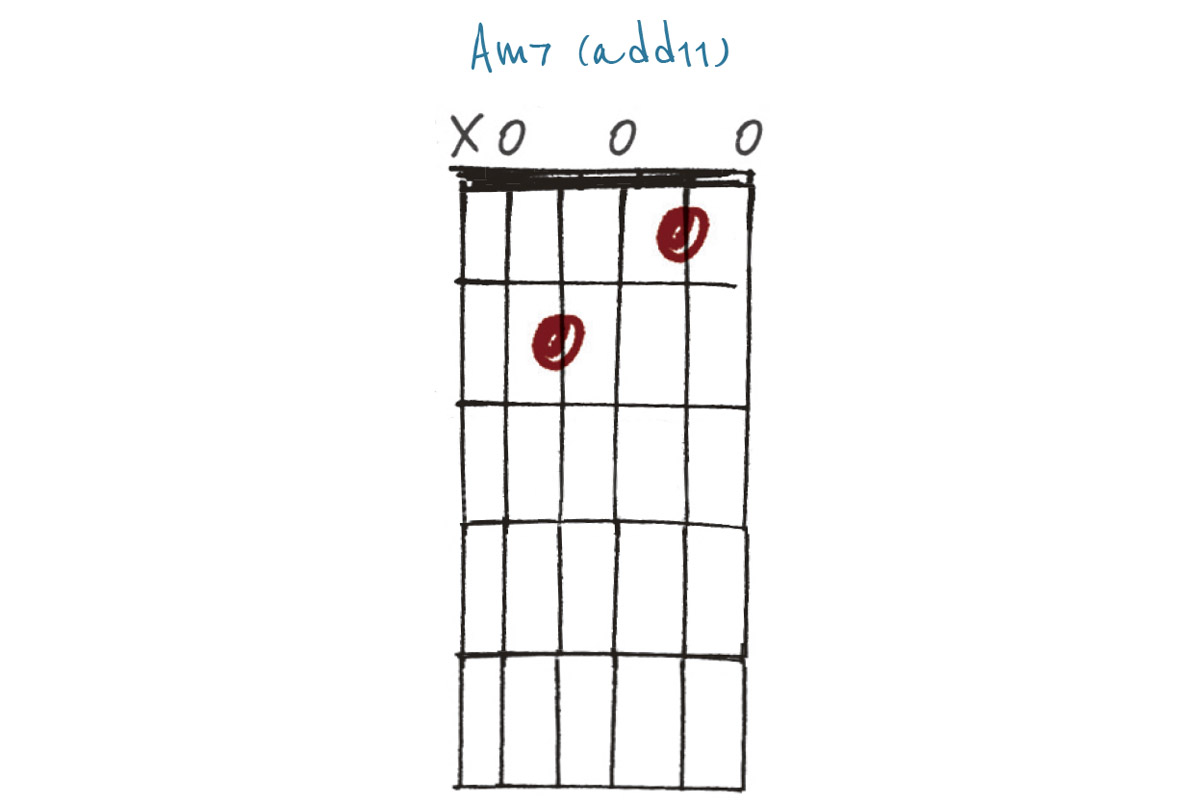
As you can see, this tuning allows for quite a few ‘standard’ chord shapes (similar to open G), but the open D strings do allow us to stretch out a little. In case you haven’t already guessed, the add11 (D) is our trusty open first string!
Example 5. E11
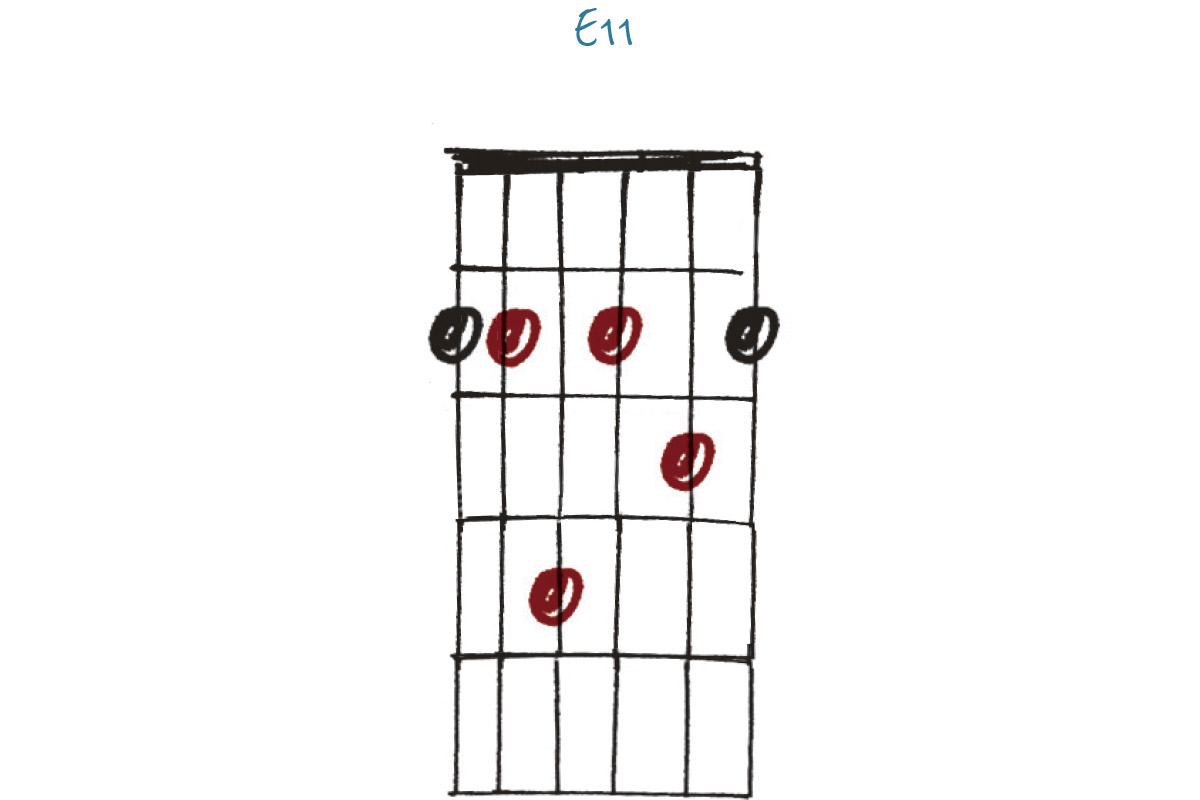
Open tunings don’t necessarily have to mean open chords – this example uses all six strings with a barre at the 2nd fret. It looks like a Bm7, but the detuned first and sixth strings completely change the harmony, giving us this hybrid of D and E chords that constitutes E11.
Example 6. Dm/maj9
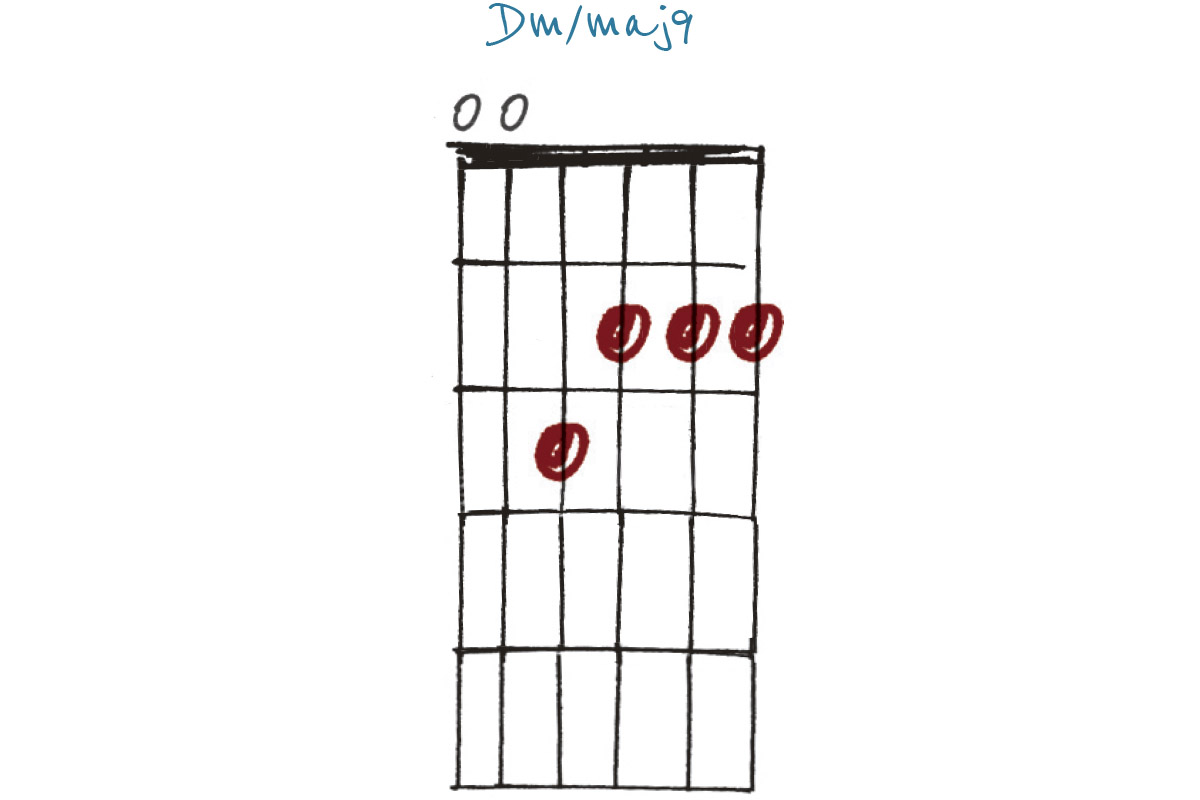
Hopefully by now, we’ve dispelled any myths that open tunings are only for folk songs! This ‘James Bond’ chord features a b3rd (F), giving it the ‘minor’ part of the name, plus a major 7th (C#), giving us the ‘major’ in the form of a maj7th. Finally, we get the 9th (E) on the first string. All done with just two fingers!
Tuning #2: Open G
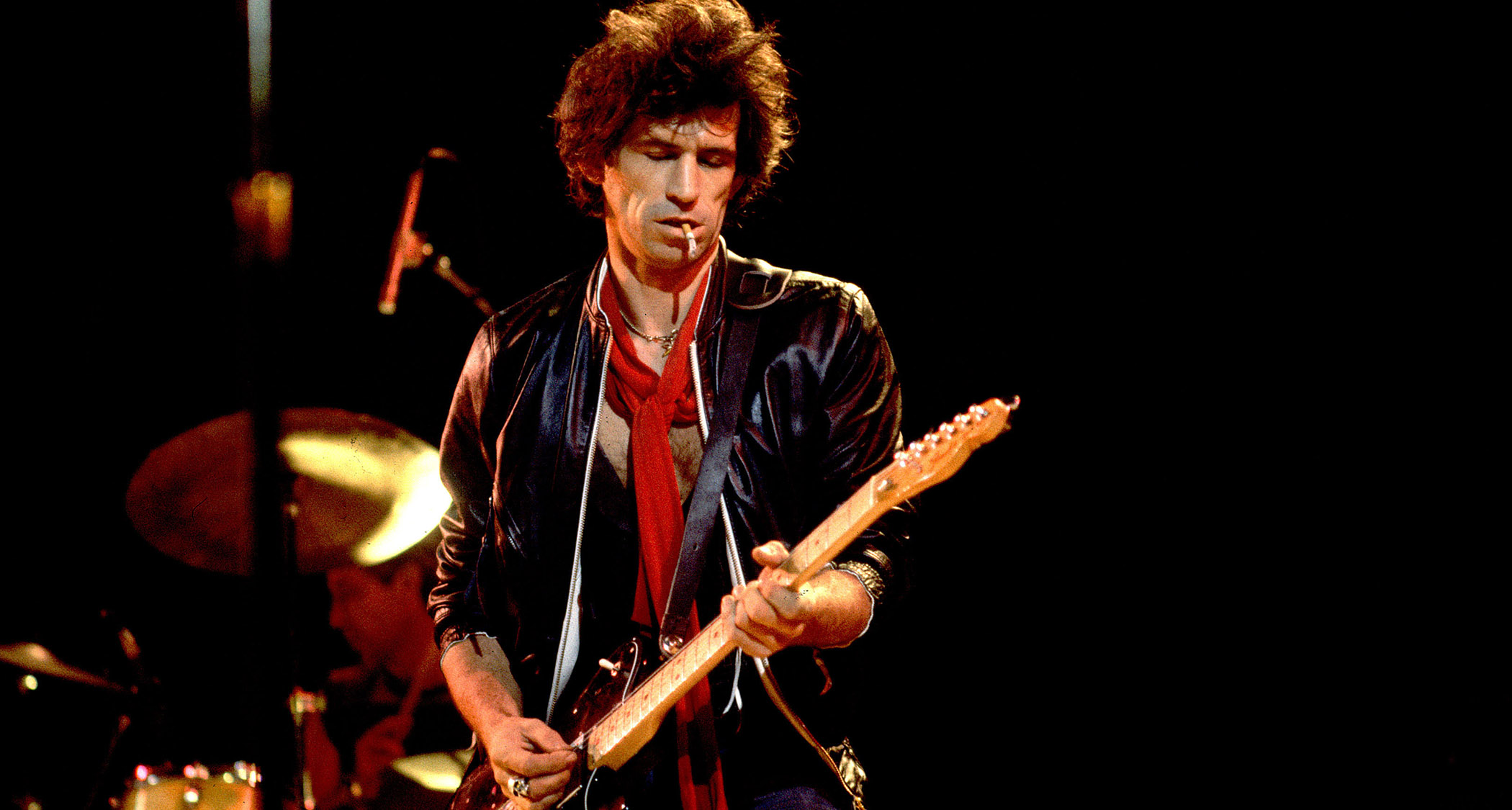
Perhaps the most widely used open tuning of all, by everyone from Robert Johnson to Keith Richards. Once again, drop the first and sixth strings down a tone from E to D, then do the same with the fifth string from A to G, giving us (from low to high): DGDGBD.
Example 7. Gadd9
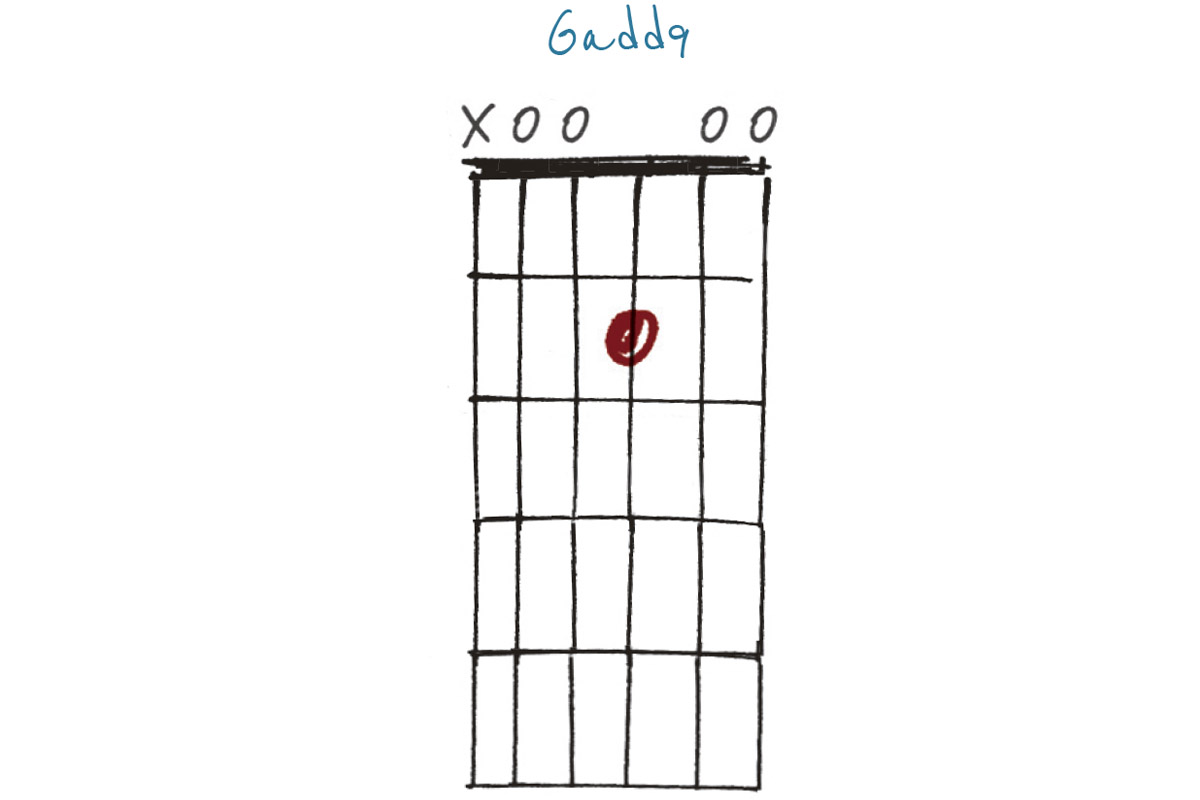
Here’s a lovely demonstration that you can sometimes play incredibly simply but get a beautiful result. Though many of the examples throughout this feature seek to demonstrate alternative chord shapes, don’t forget moving one note around can be enough.
Example 8. Em9
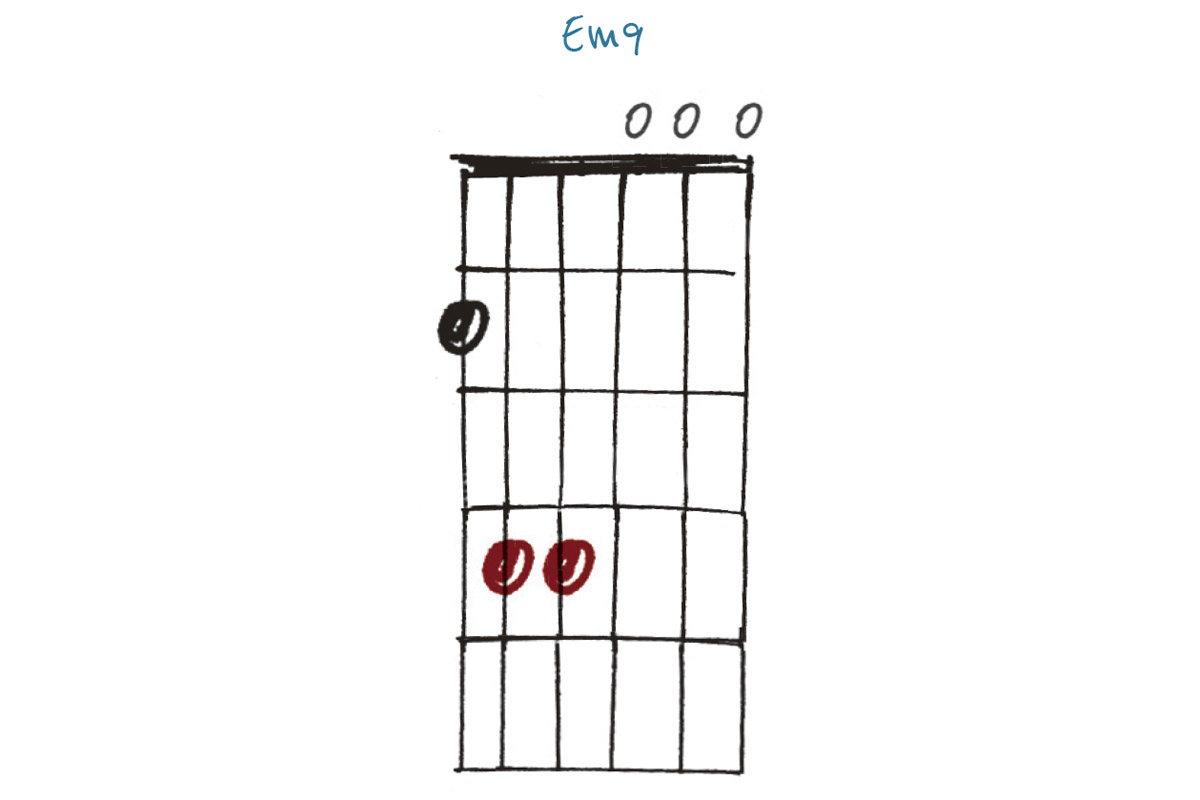
Being able to play Em9 as a ringing open chord is a real bonus in open G. Though it can seem counterintuitive fretting the sixth string to get what would be the open root in standard tuning, don’t forget the possibilities the open D can give elsewhere.
Example 9. Cadd9
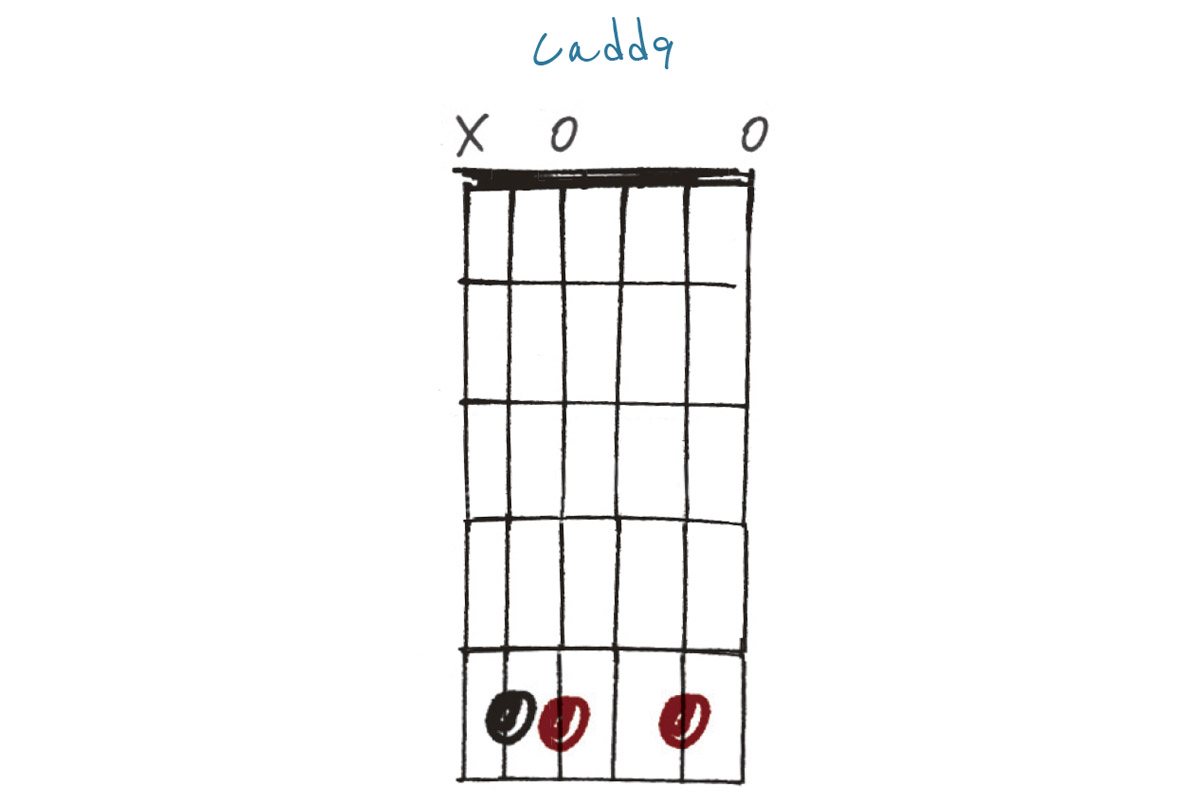
While there are movable chords to be found in this tuning, it’s hard to resist making use of the ringing open strings, so here’s a Jimmy Page-style Cadd9. It’s worth sliding this shape around to see what other chord voicings you can create.
Example 10. Bm (add#5)
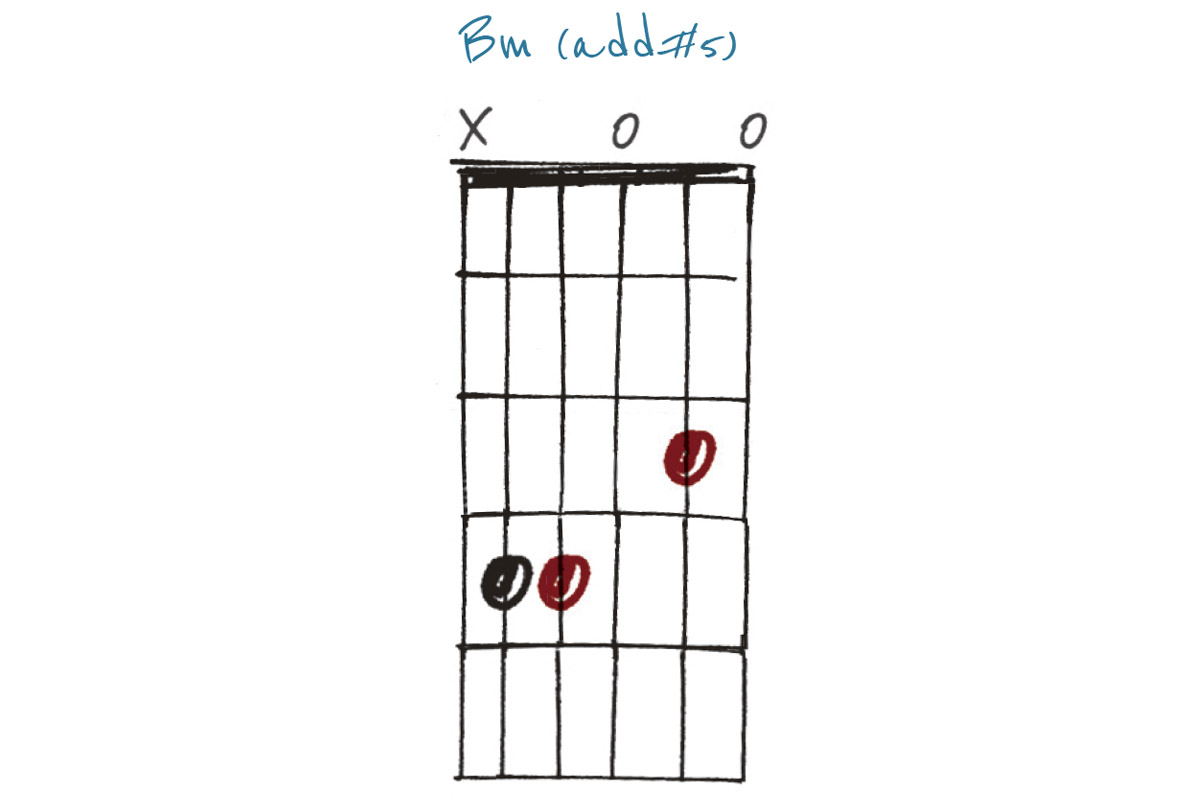
You can see this chord comes from shifting and altering the same fretted strings against the open ones. Though the name sounds complex, it’s really just a Bm with a ringing open third string. This gives us the #5 (G).
Example 11. Csus2 (add#4)
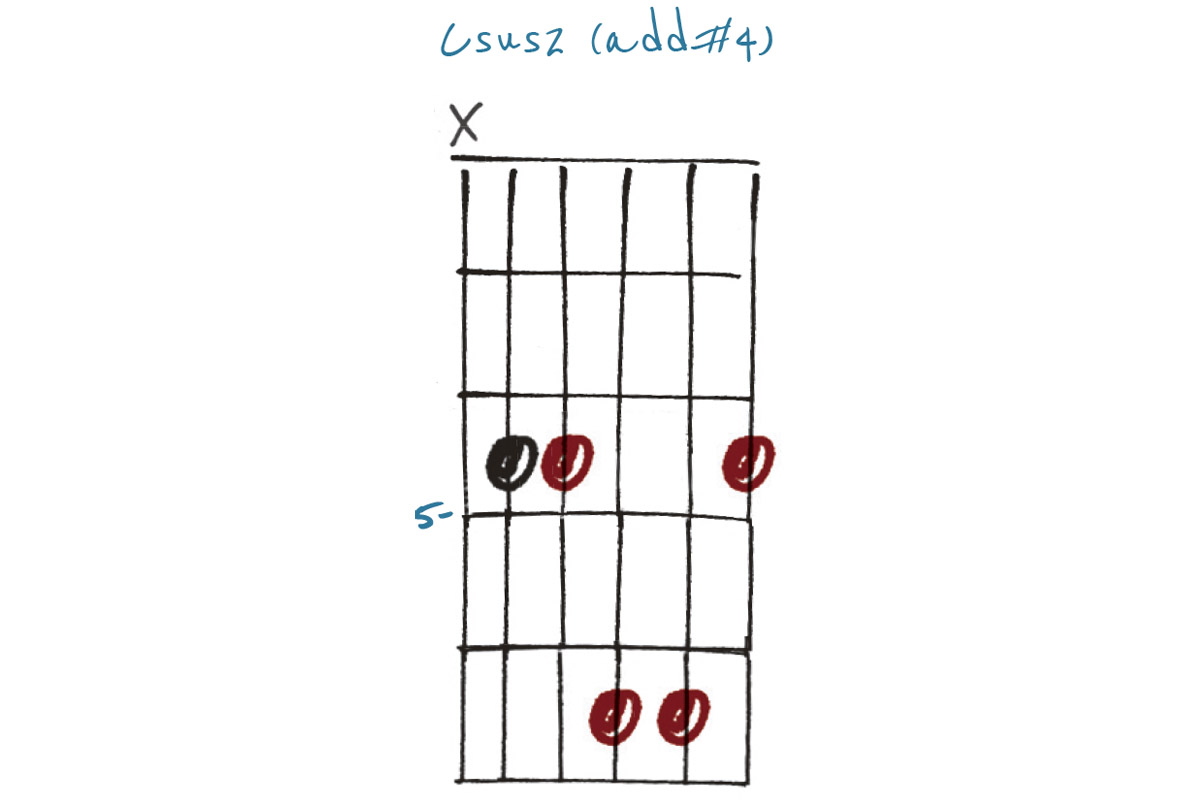
Here’s a movable chord with a complicated-sounding name. If you lift off the second string but keep the rest of the shape (including the barre) intact, you’ll get a Cadd9. If you lift off the third string, too, leaving just the barre, you’ll see where Joe Satriani’s Flying In A Blue Dream came from.
Example 12. Gmaj9
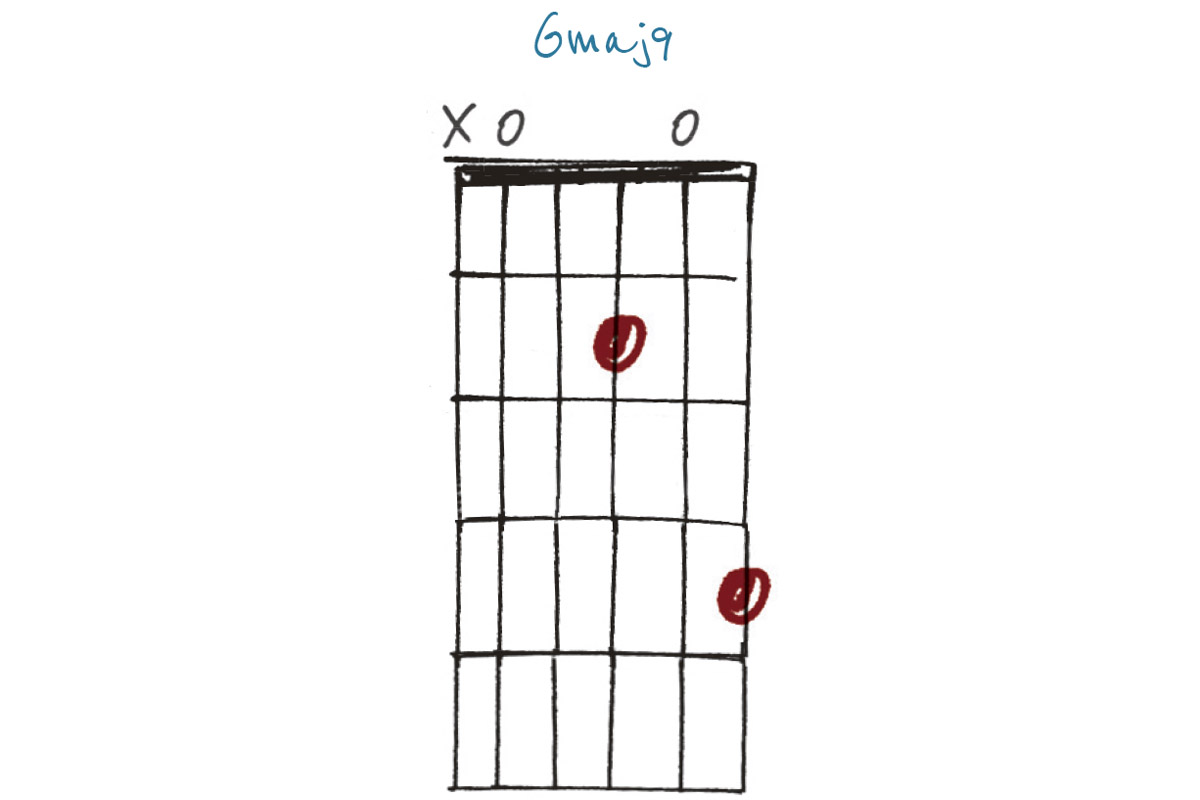
Gmaj9 sounds lovely in this open position, but with minimal effort it could be made movable as a barre chord, similar to Example 11. It’s not always important to understand the theory behind the chord names and shapes – that can come later.
Tuning #3: DADGAD
Though very popular in folk/Celtic circles, with Davey Graham introducing it to the mainstream in the 60s, this tuning was also used by Jimmy Page to compose Kashmir and provides plenty of other opportunities to get weird and wonderful.
As with our first two tunings, drop the first and sixth strings down a tone to D, then the second string down a tone to A. Leave everything else in standard, giving us (from low to high): DADGAD.
Example 13. D7 (#5#9)
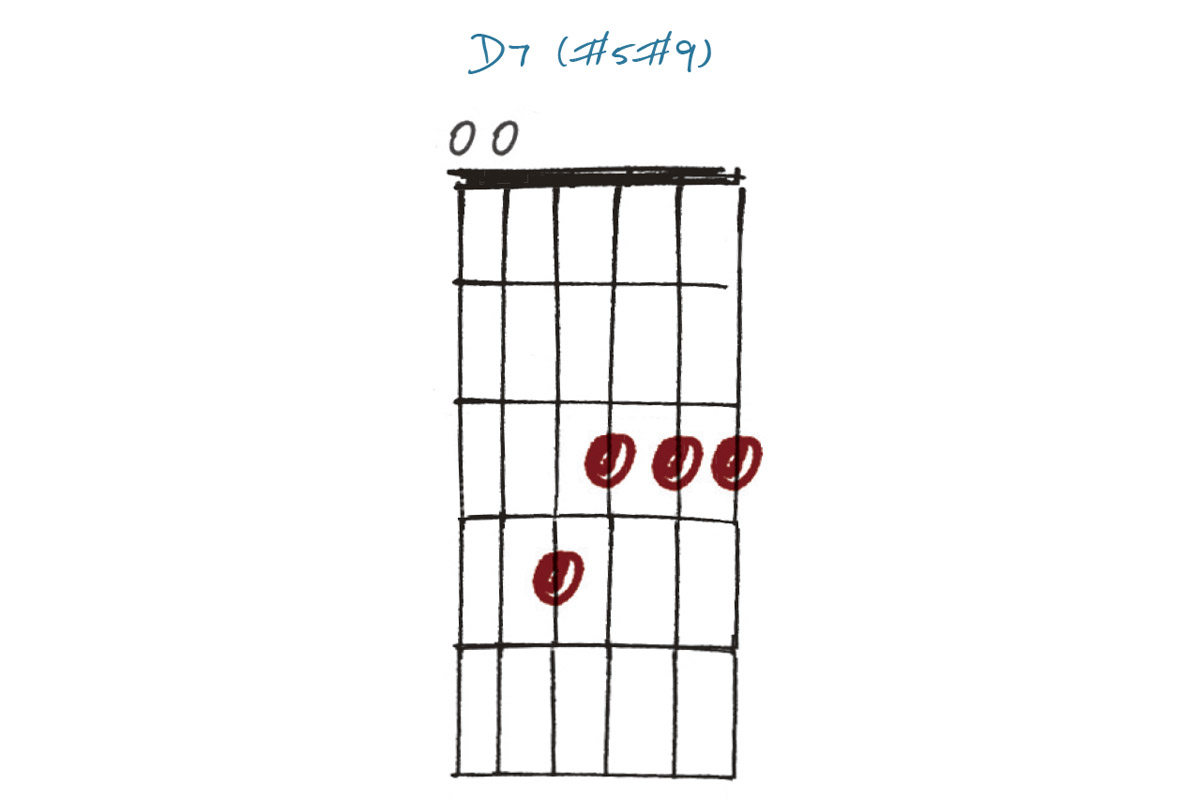
It may sound as though we’re jumping in the deep end, but this is actually a two-finger chord, based around a D7 but adding a twist with the #5th (A#) and #9th (F). Yes, F is also the minor 3rd, but that would conflict with the D7’s F# on the fourth string, so we’re calling it an extension.
Example 14. Gadd9
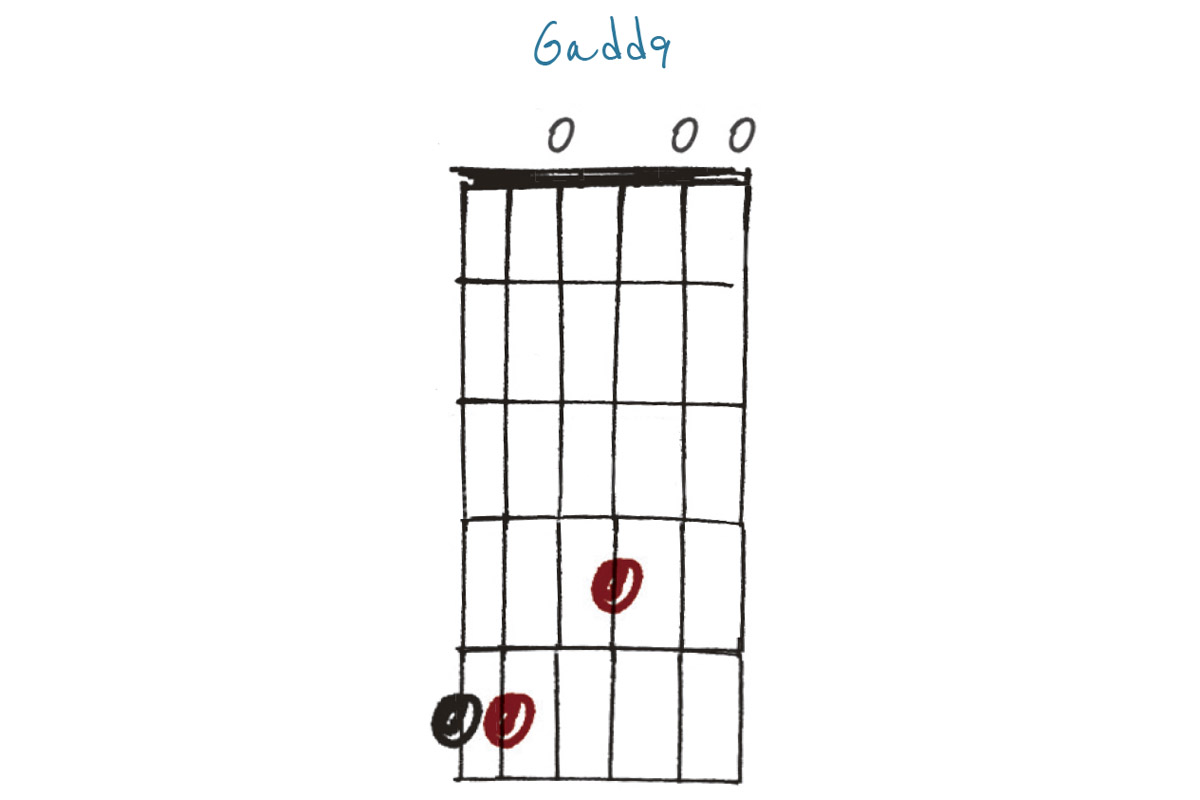
Another extended chord made easy by an alternative tuning! This is another shape worth moving around for some nice surprises. It’s also worth moving notes up or down a semitone/fret within a shape where possible, as this can sometimes give you other useful chords.
Example 15. Gmaj7
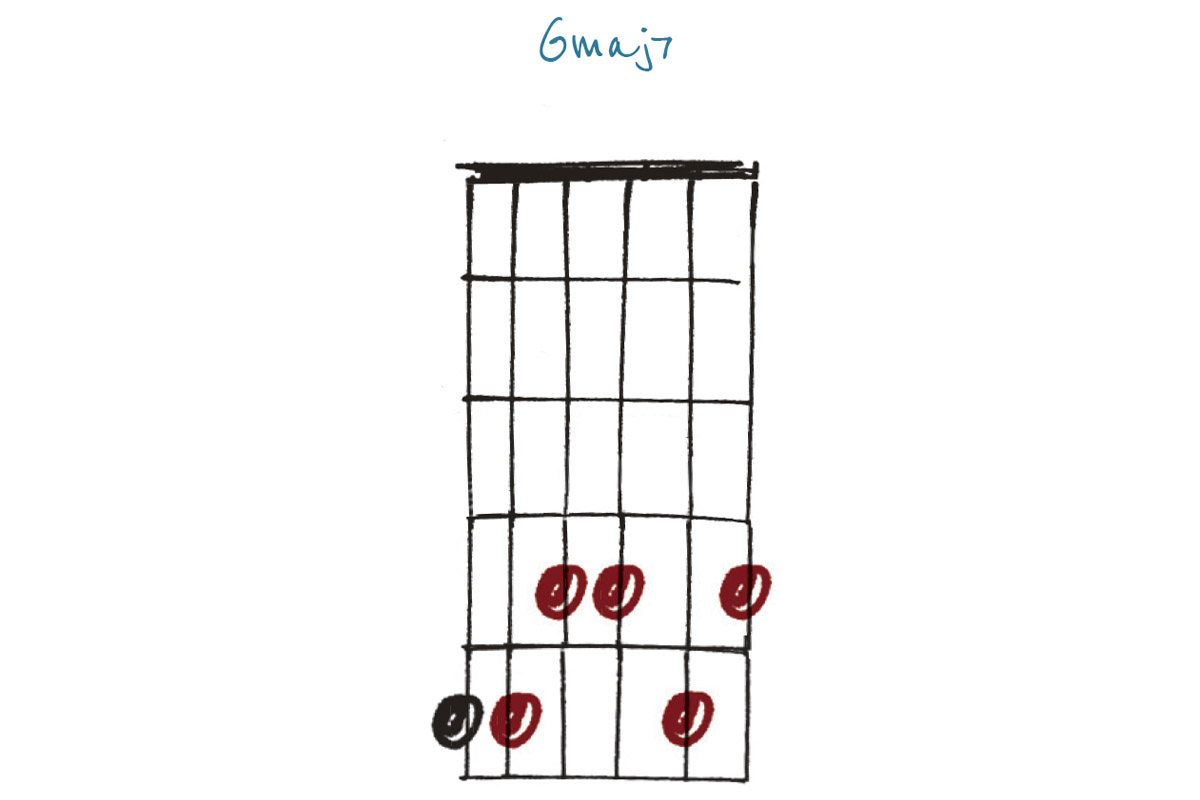
Here’s a movable maj7th voicing (featured here in G ) that can be taken anywhere on the fretboard, space permitting. It’s a little tricky at first but well worth the trouble. Most definitely a surprise, given this tuning’s Moroccan/Celtic heritage.
Example 16. Gm11
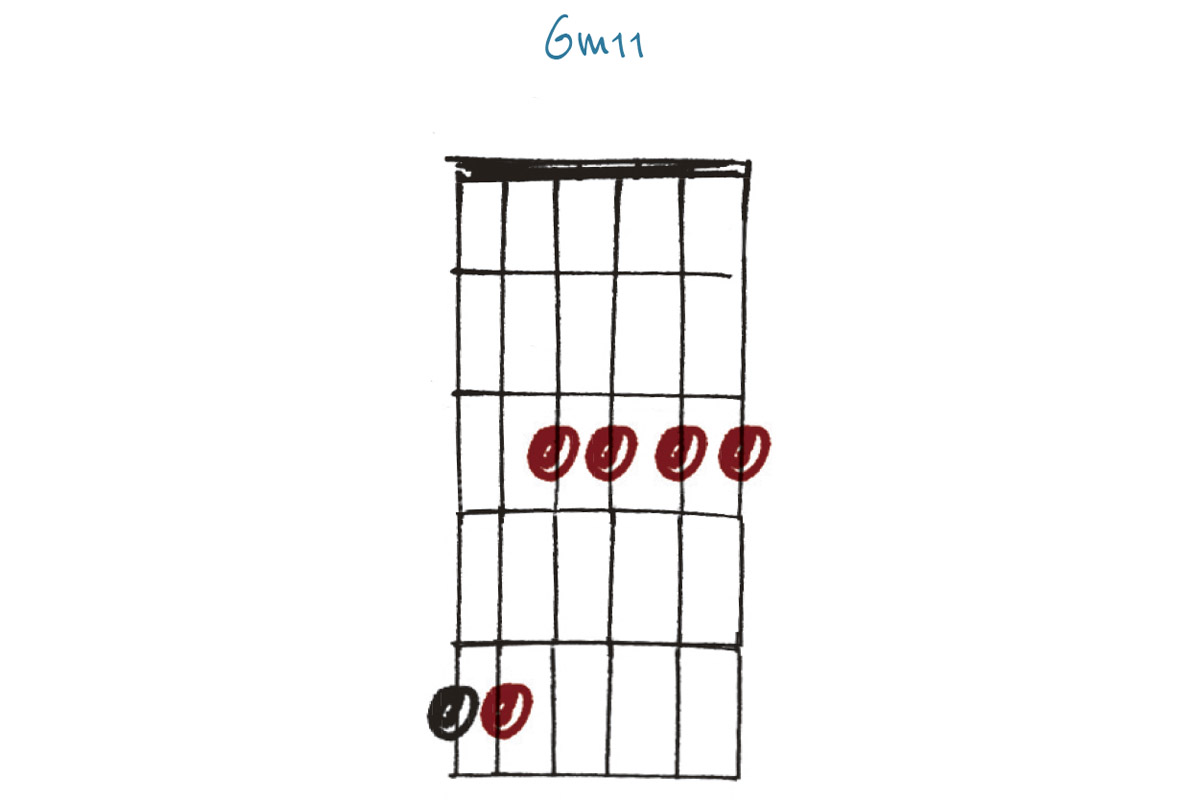
A first-finger barre at the 3rd fret while holding down two strings in the bass gives us this lovely Gm11 chord. The 7th (F) appears on the first string, with the 11th (C) on the second. This is another movable chord, with all six strings fretted.
Example 17. Dmaj7 (add6)
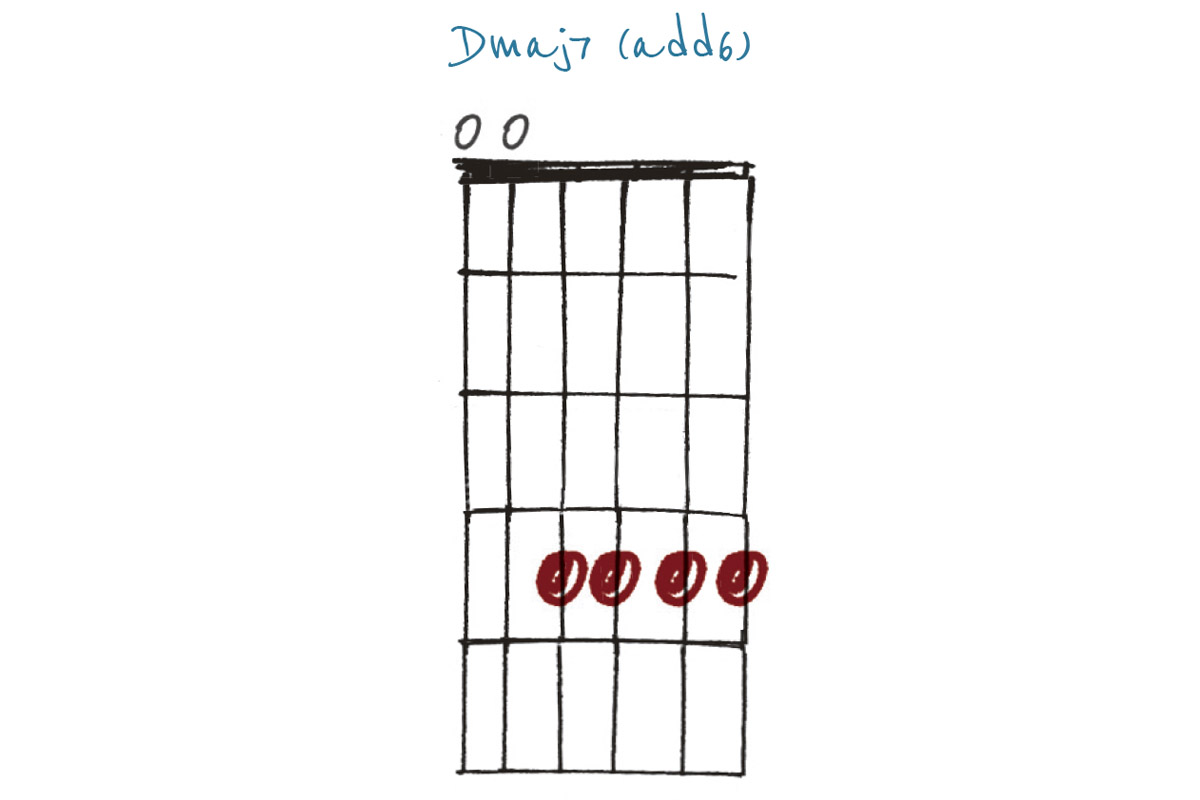
A nice choice to resolve to after the Gm11 in Example 16, this is a one-finger barre at the 4th fret of the first, second, third and fourth strings. There are several other voicings of Dmaj7/D7 to be found around here, so keep experimenting. In the meantime, check out the next example.
Example 18. Dmaj9
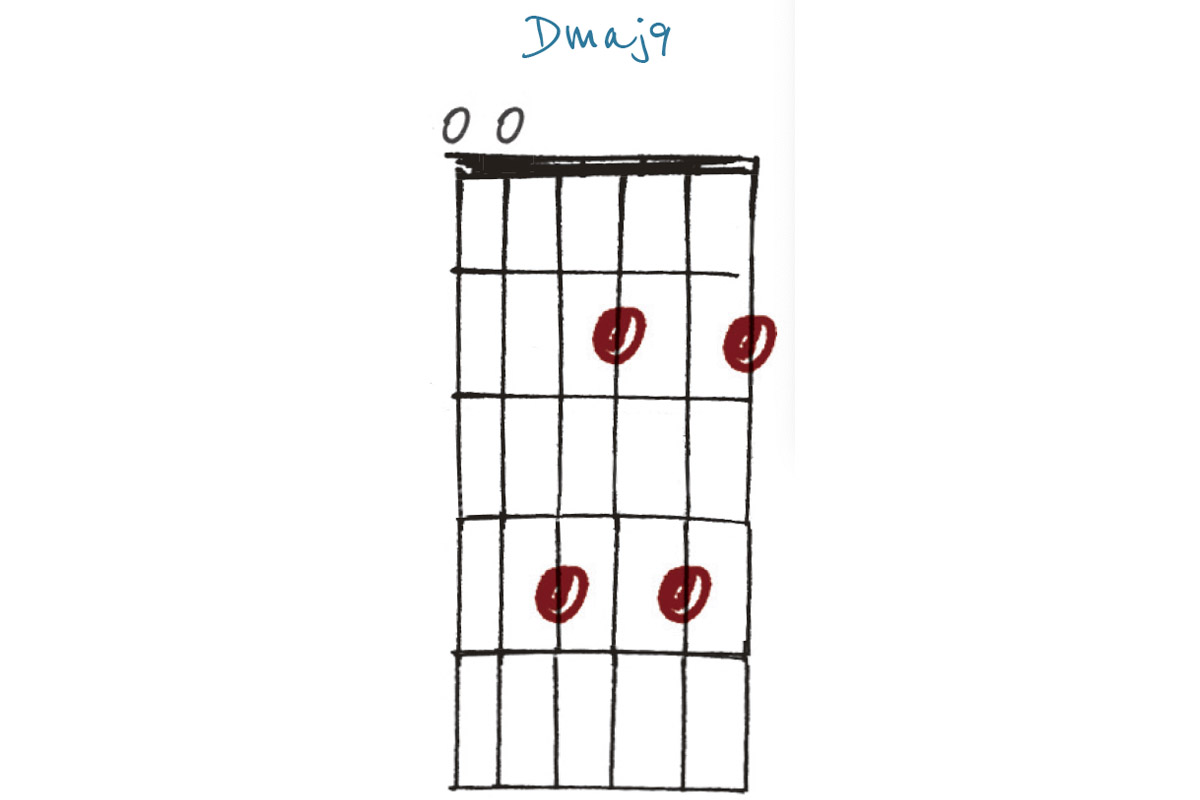
Here is one of the other Dmaj7-inspired voicings found in the same area as Example 17. As we have a 9th (E) at the 2nd fret of the first string, along with the maj7th (C#) on the second, this is called a major 9th chord.
Tuning #4: Open D
Another very popular tuning, you can hear a bit of Brown Sugar-era Keith Richards and a little bit of Joni Mitchell.
As before, we start by tuning the first and sixth strings down a tone to D, then the second string down a tone to A. Finally, we tune the third string down a semitone from G to F#, giving us (low to high): D A D F# A D.
Example 19. Csus2/G
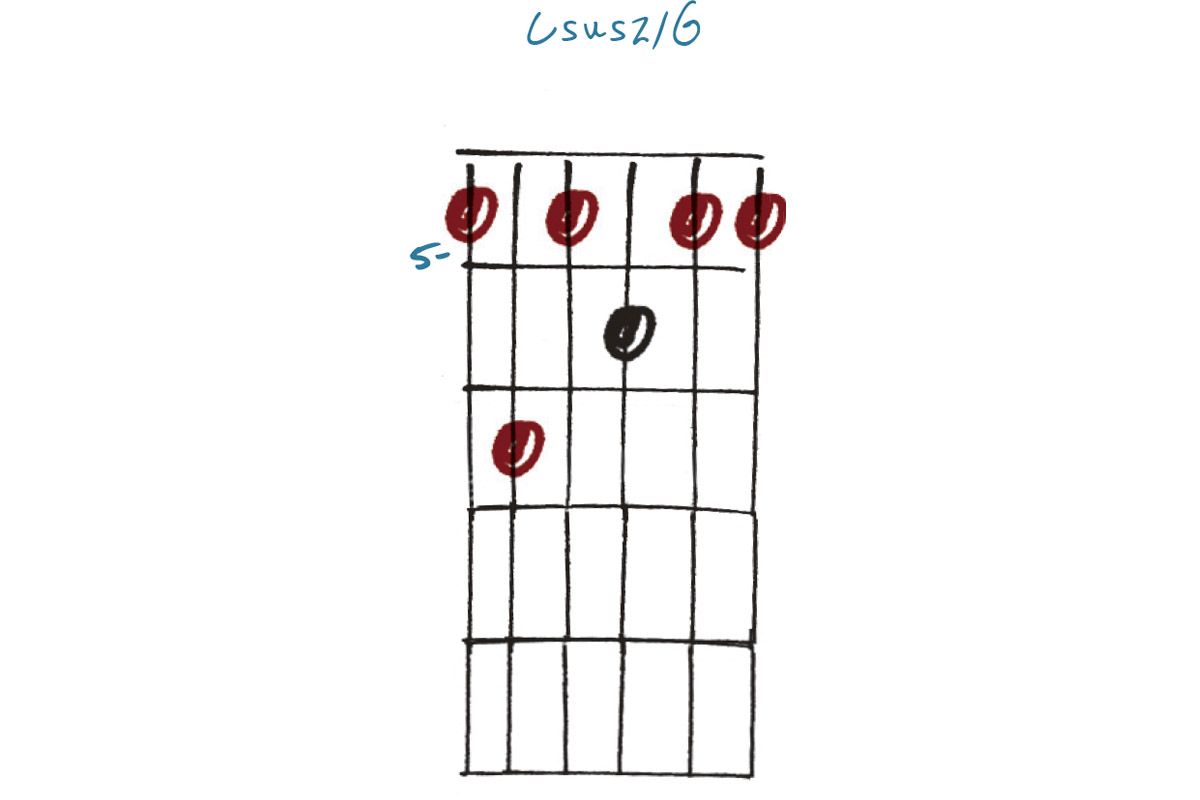
Play what would be an A7 barre chord in standard tuning and you get this interesting Csus2/G chord. The G is our bottom note on the sixth string, but we then move up to an E on the fifth string, which would give us a Csus2/E… Don’t get stuck on the theory, just keep looking for weird chords!
Example 20. G7sus4
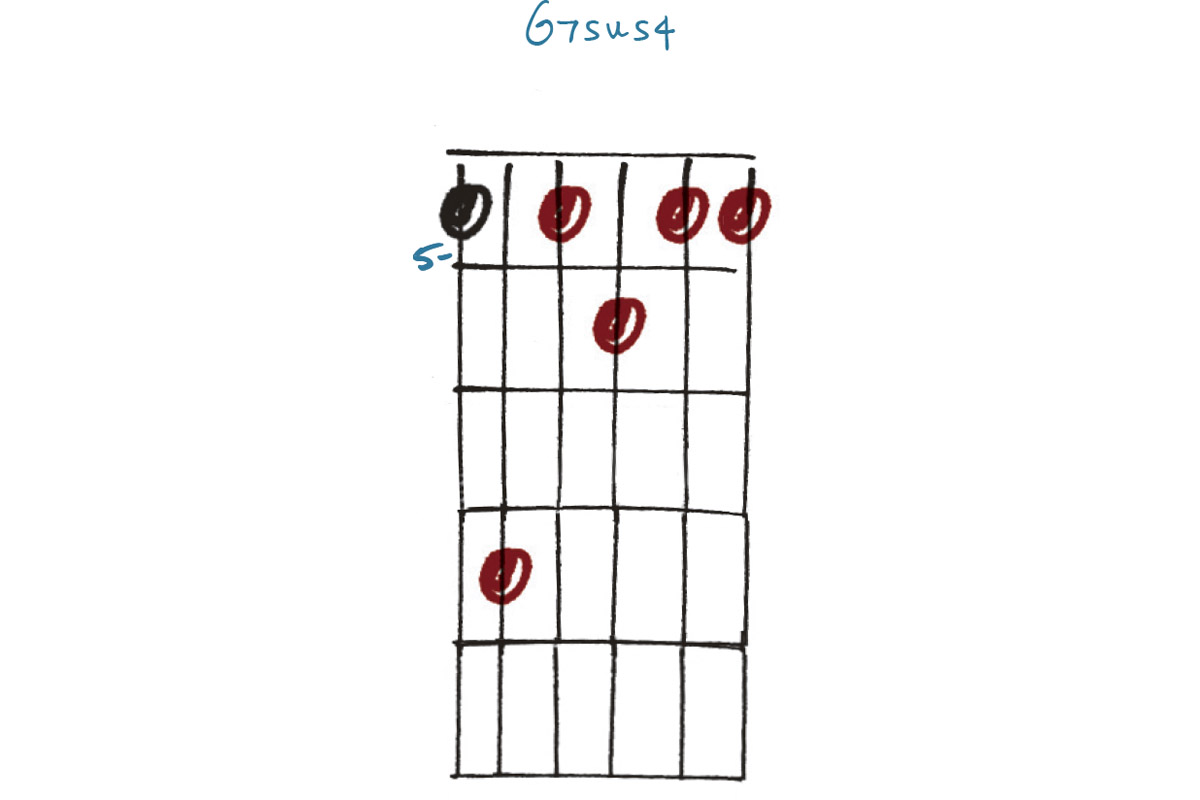
Though it’s only one note different from Example 19, this is contrasting enough in theory to have a completely different name. It works very well with Example 19 (and a straight barre at the 5th fret) for some Joni Mitchell-style moves.
Example 21. Dm7
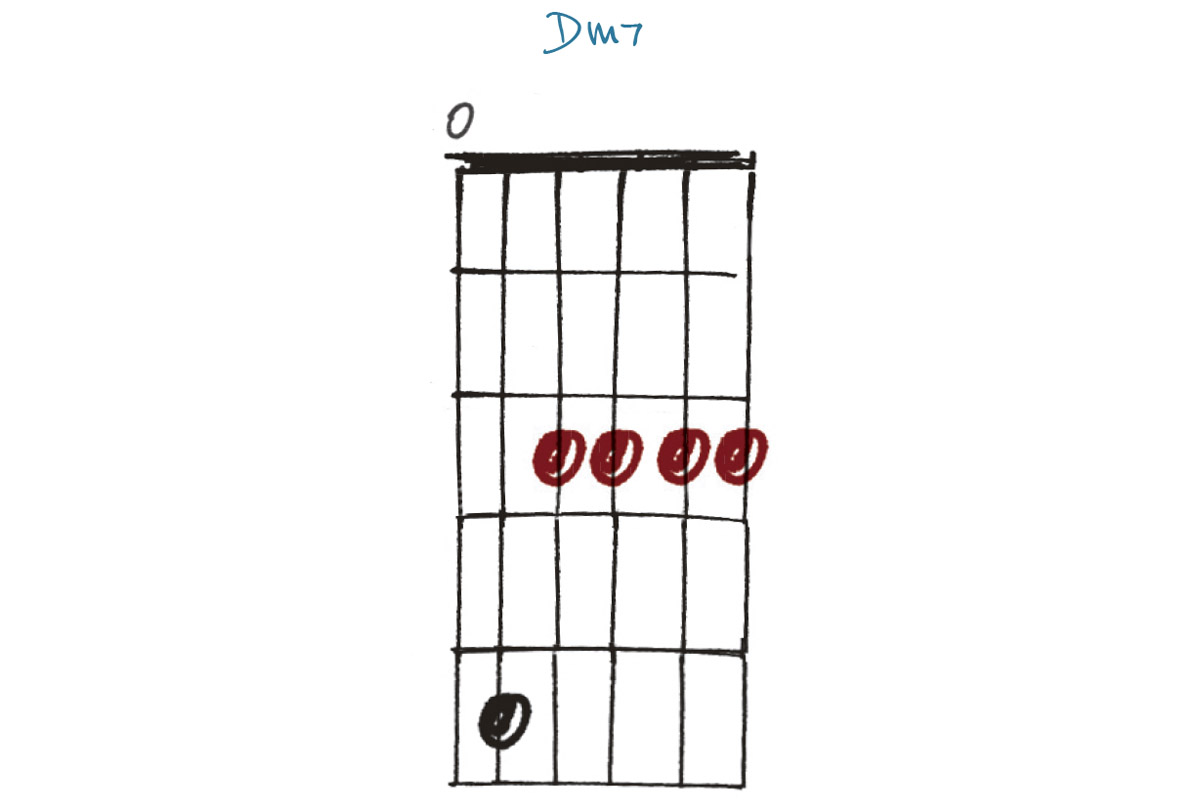
Bringing back some open strings, this Dm7 makes use of the open sixth string (D) as the root. In a band context (or with a bass player), this could become a movable chord by omitting the sixth string/root.
Example 22. Dm6
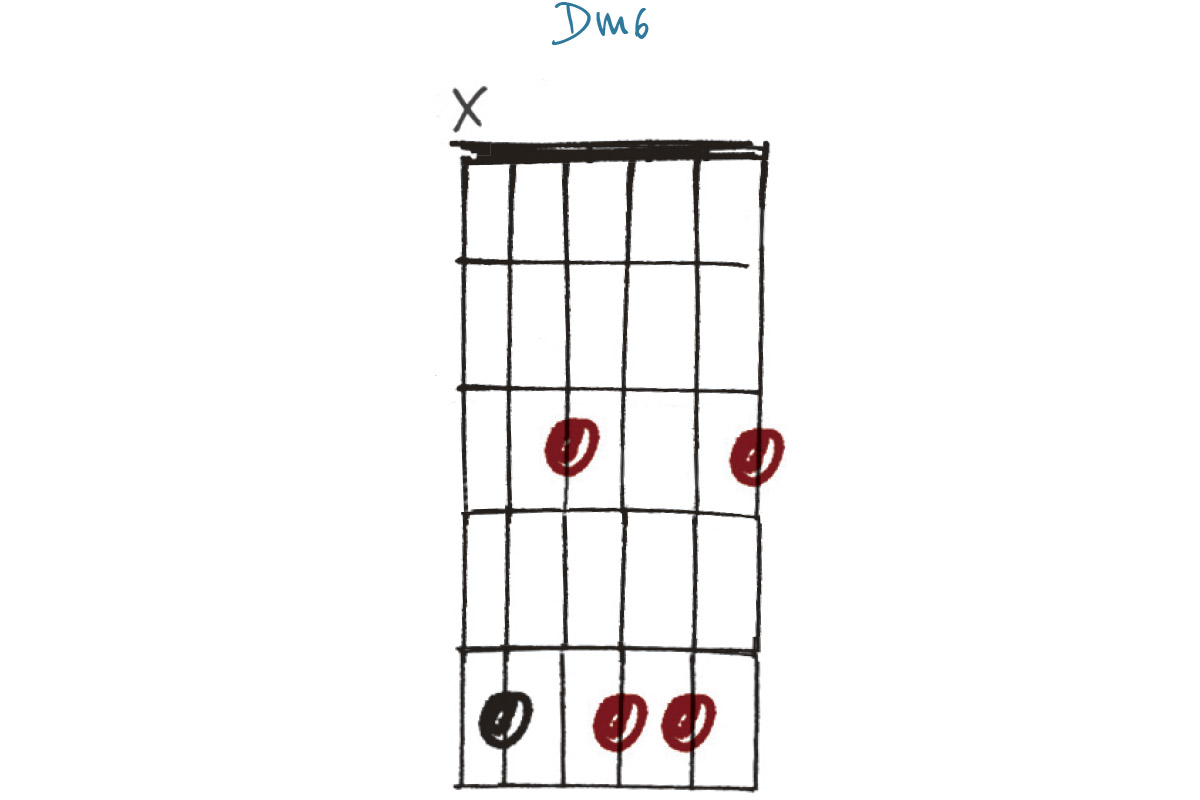
Though we could use the open sixth string as the root here, there’s no need, as it appears on the fifth string. This also makes this chord movable, so it’s worth investigating whether other chords might be found by tweaking this shape. The 6th (B) is found here on the third string.
Example 23. A7
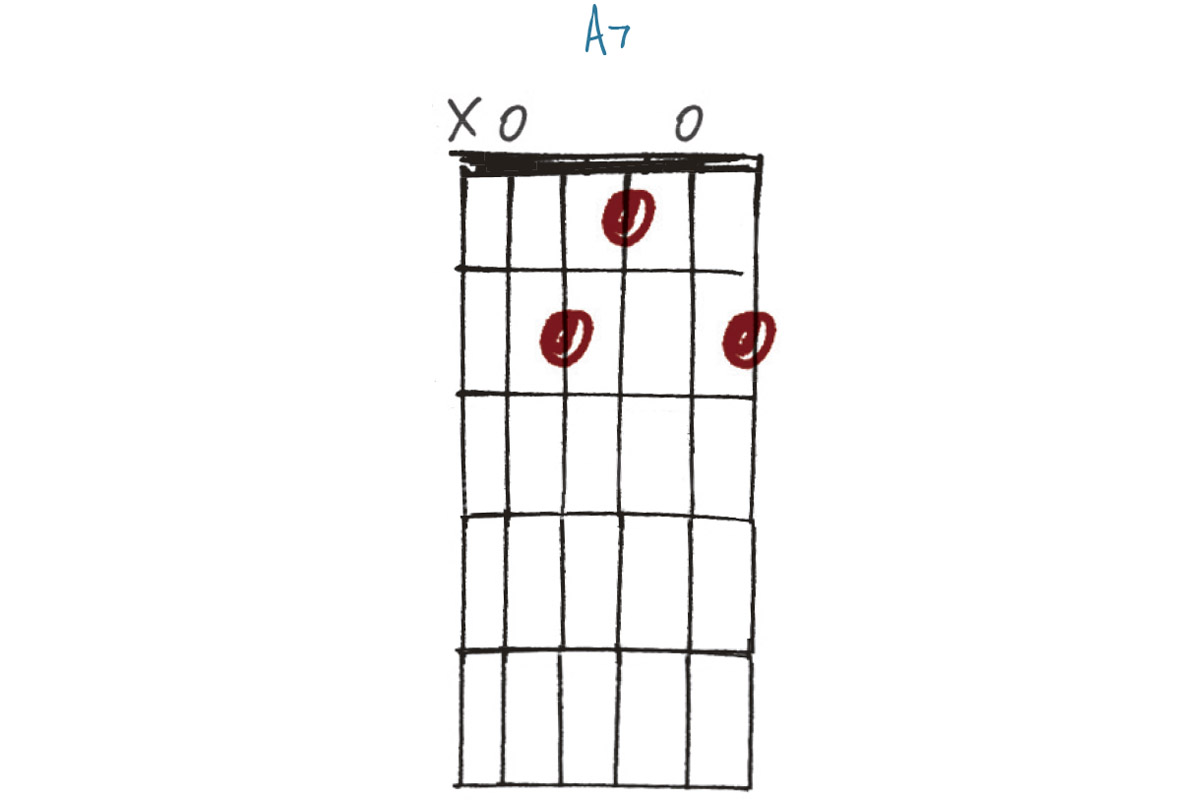
Judging by the name, this is a very common chord, but because we’re in open D, there is a twist… The 7th (G) is adjacent to the root (A) on the open second string, so this gives a certain dissonance – or texture, at least. A useful chord, for sure.
Example 24. A13 (b9)
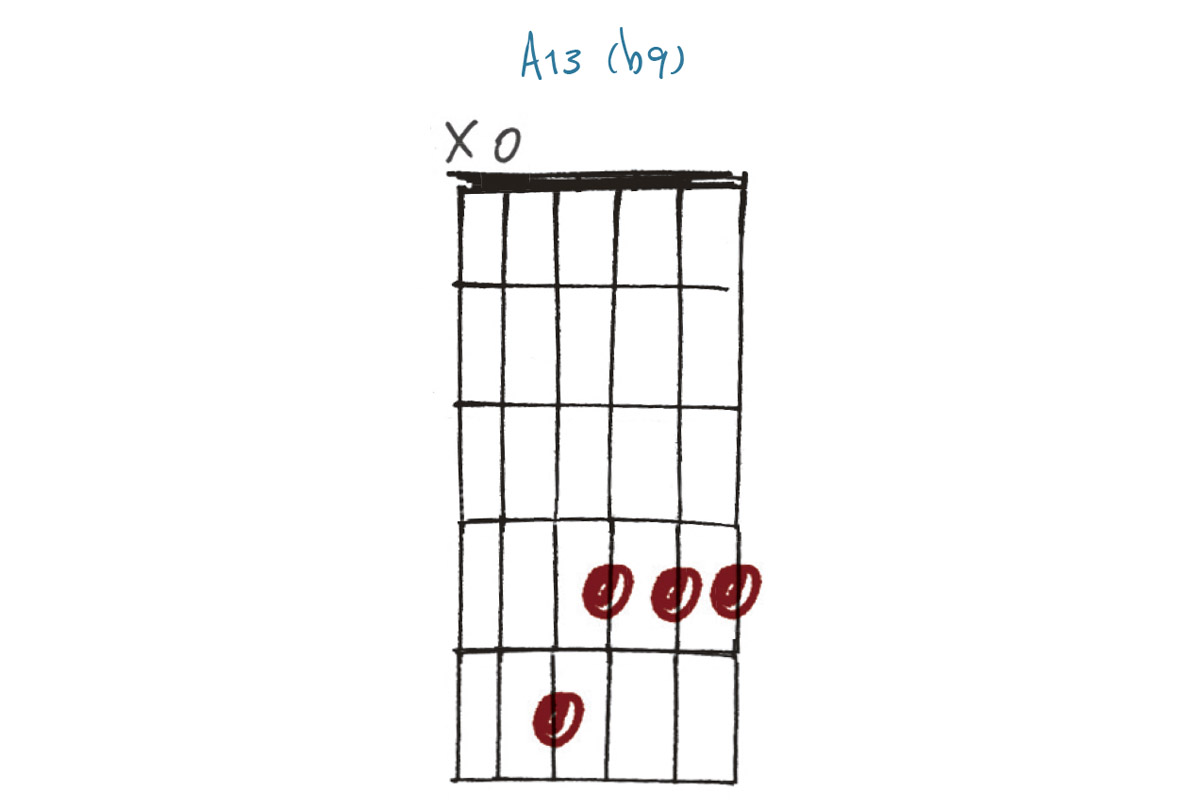
More the type of chord you’d expect to find in a jazz ballad than in open D tuning, but that’s what makes things interesting. Another two-finger chord with a complicated name. Why not see if you can find a Dmaj7 somewhere to resolve this to?
Tuning #4: Open D
Unlike the other tunings here, open C is not based around dropping E strings down to D. Though it shares some characteristics with the other tunings, we’re getting much more into Nick Drake’s Pink Moon territory, with a bit of Jimmy Page similar to Friends or Bron-Yr-Aur.
Drop the sixth string two tones down to C (extra light strings may get a bit loose), then the fifth and fourth down a tone to G and C respectively. Leave the third and first strings standard but raise the second string a semitone to C. This gives us (low to high): CGCGCE.
Example 25. Amadd9
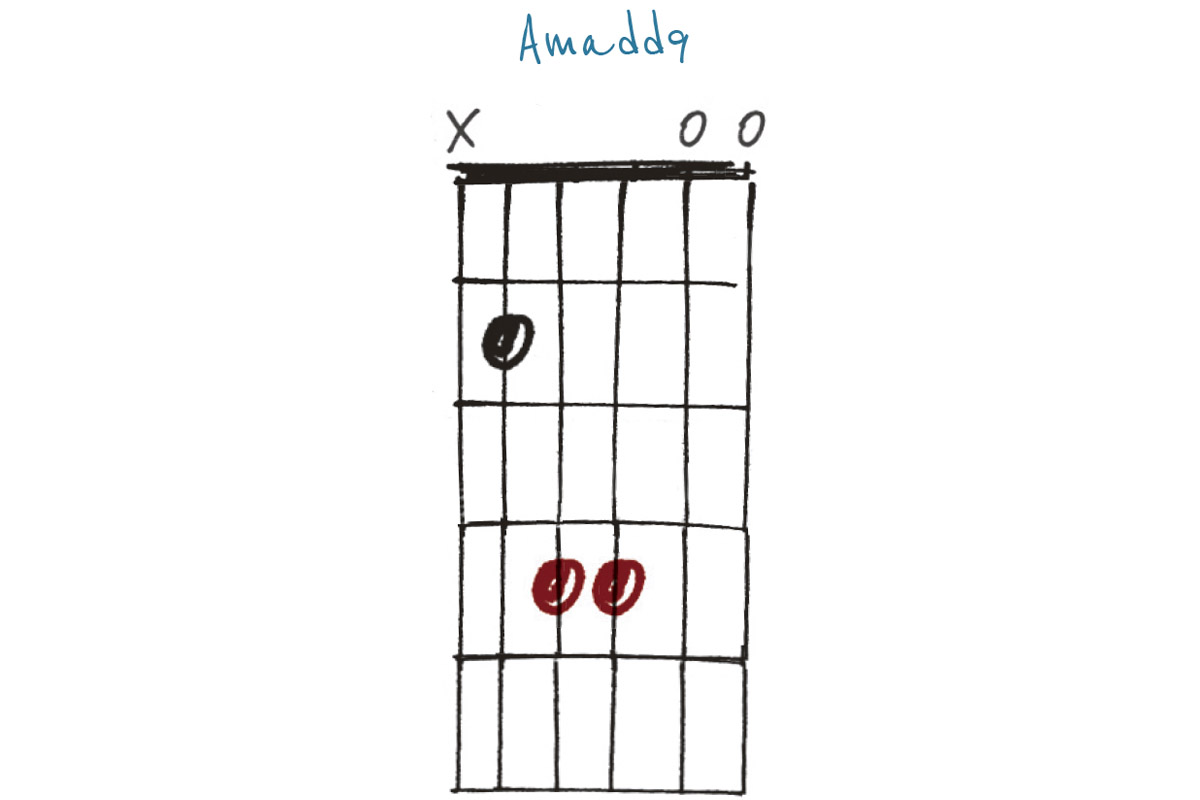
As with the other tunings, we’ve avoided the obvious barre shapes in favour of some more exotic voicings. This lovely Amadd9 makes use of the open first and second strings, but we’re saving that open C at the bottom for later.
Example 26. Amadd9/G
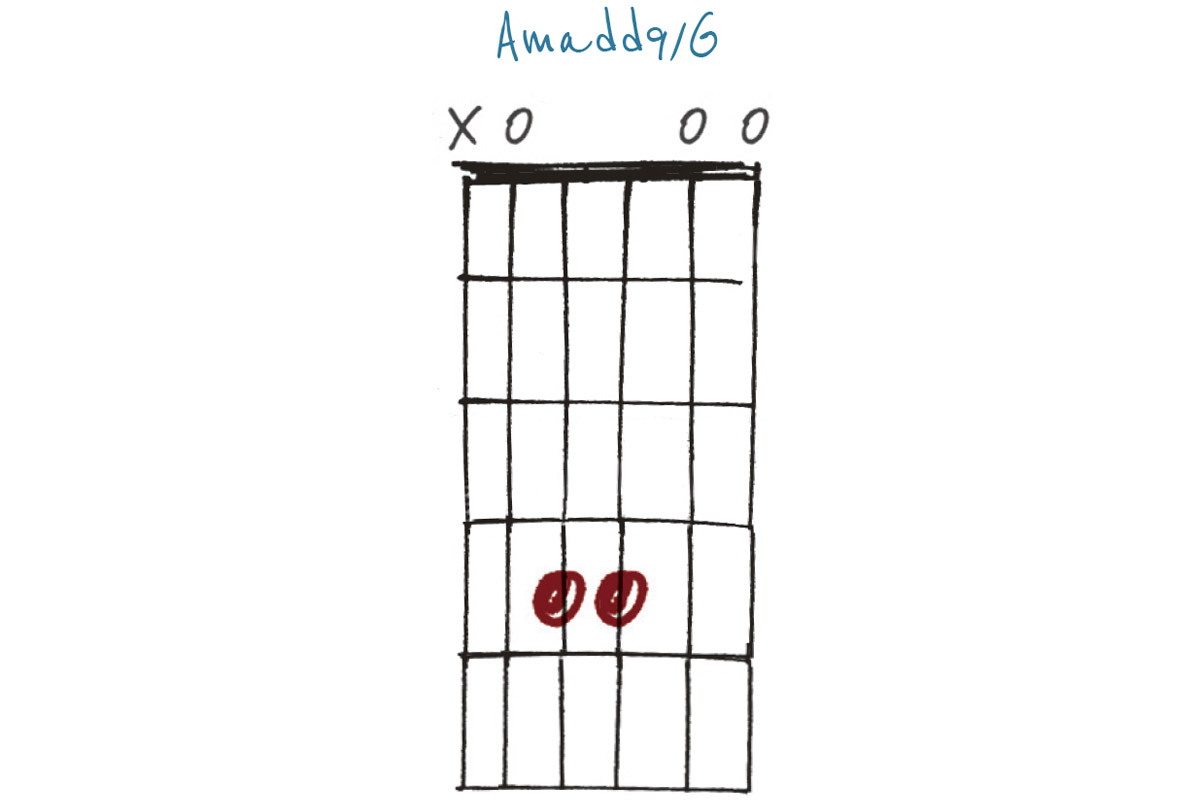
As the name implies, the only thing different about this compared with Example 25 is the G in the bass. However, it fits beautifully with Example 25 and demonstrates how just a small change in fingering can give a radically different chord/mood.
Example 27. Fsus2 (addmaj7)
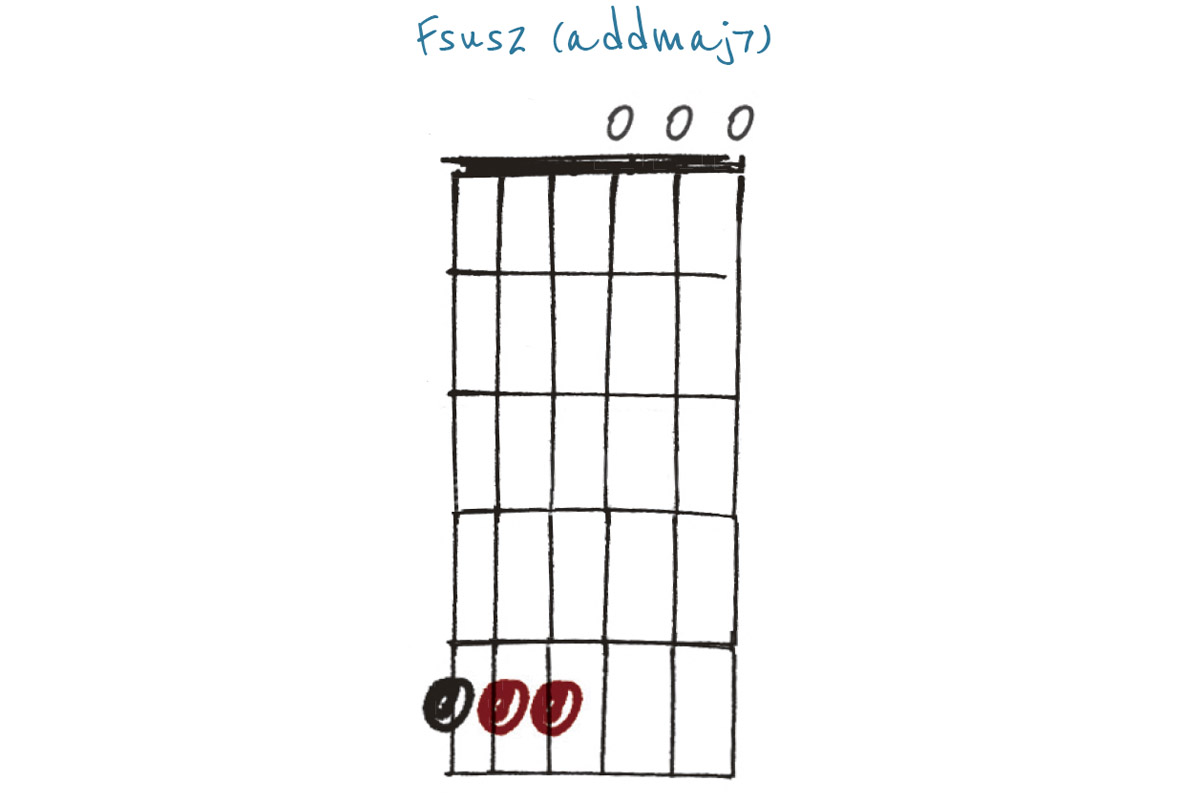
This would be a relatively easy-to-recognise Fsus2 but for the maj7th (E) that appears on the open first string. This starts to hint at shades of Nick Drake, though most of his tunings were altered, rather than open. But you could try tuning the third string down a tone to F and using a capo at the 2nd fret for Pink Moon.
Example 28. Cmaj7
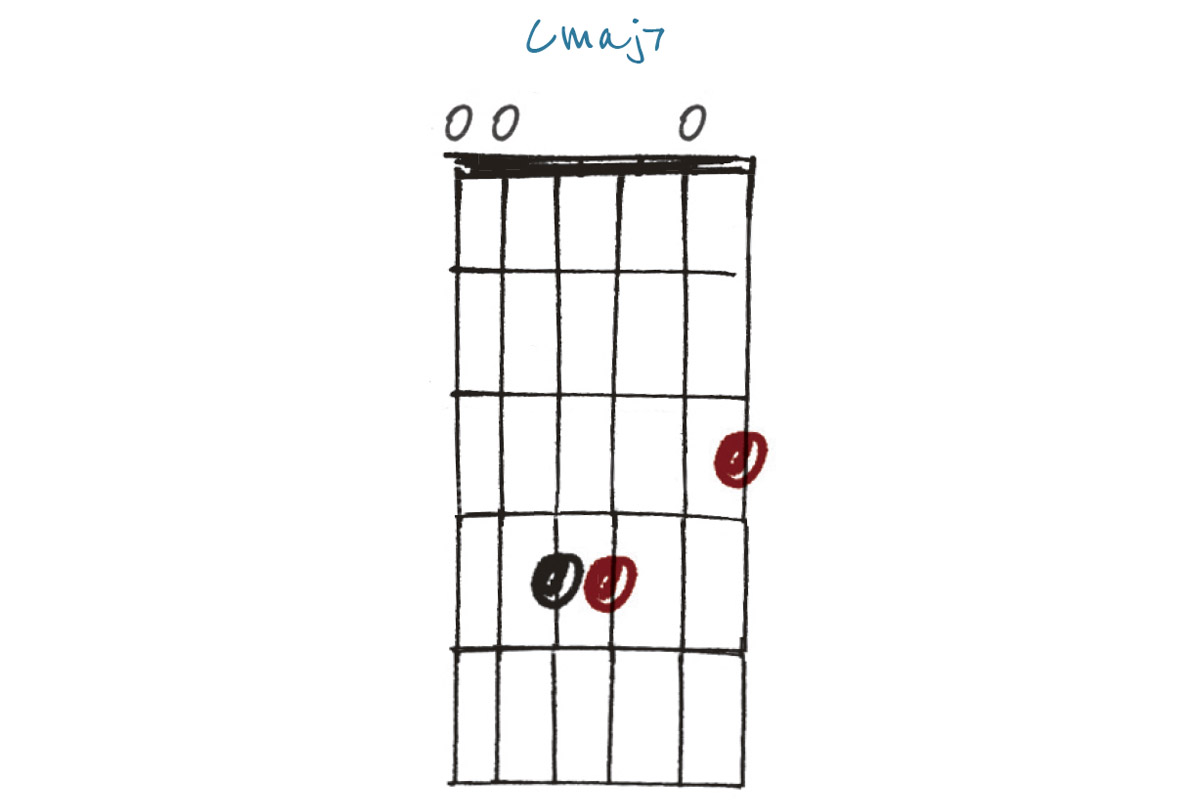
While the name suggests a well-known chord, this really is Cmaj7 with a twist. Firstly, the low C and G on the sixth and fifth strings give much more depth than any standard tuned version. Secondly, the maj7th (B) ringing adjacent to the open C (root) on the second string gives an interesting dissonance.
Example 29. Ebadd9
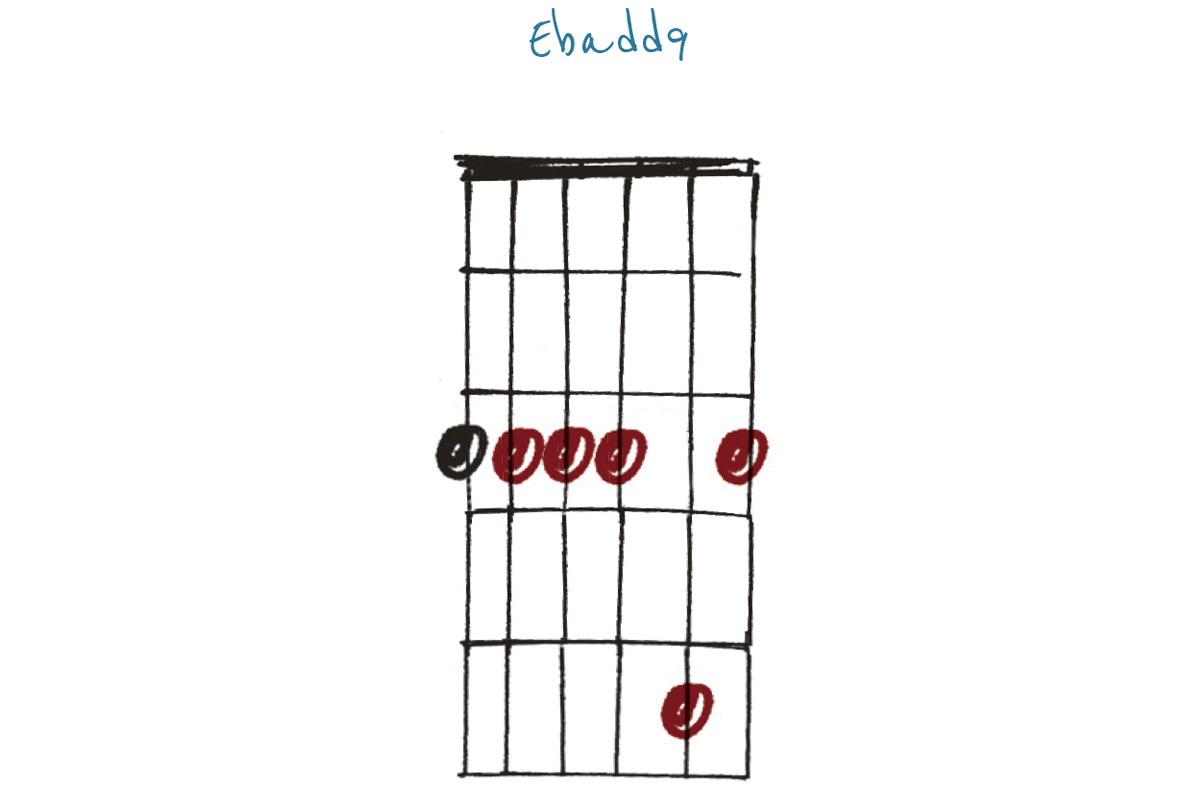
A movable chord using all six strings, this shape is great for using as a basis for experimentation. Try lifting off or adding various notes to the basic barre and you will find a few other useful chords you can use anywhere.
Example 30. Dm7
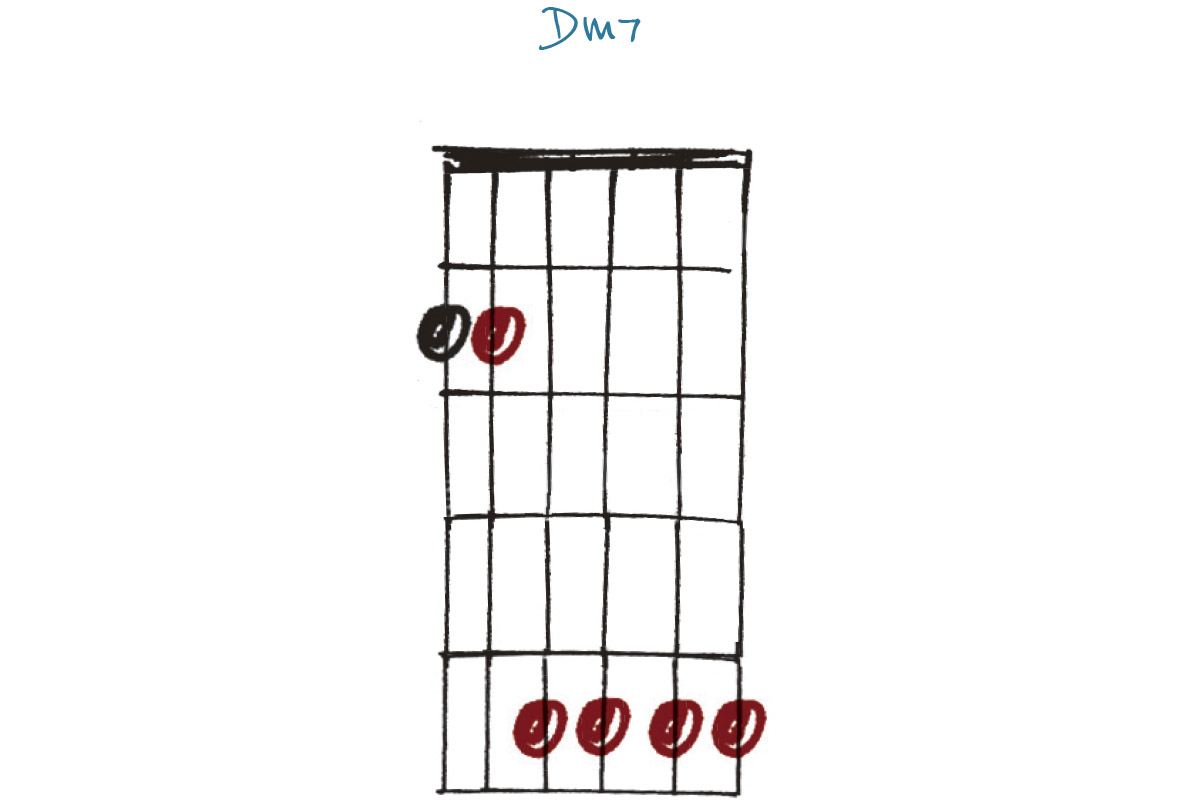
Another six-string chord that can move anywhere. This one needs a bit more fretting hand strength, but the detuned strings can help a little, as they don’t need quite so much pressure. Try moving just the barre up to the 3rd fret for another interesting chord.







